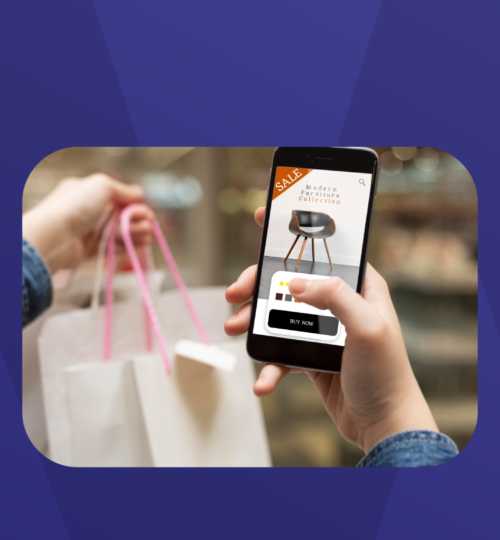In today’s individualist societies, plural pronouns are either mere redundancies or accumulations of an infinite number of “I”s, which led many recent marketing efforts to focus on distinction and standing out from the crowd. It would be odd for enterprises to promise their users that they will be noticed and not take notice of their own customers. This is where personalised content and product customisation come into play.
First of All, What is Product Customisation?
Product customisation or product personalisation is the practice of fitting a business’ offerings to the demands and expectations of a customer or a customer group. A strategy that adapts the service or product to the customers or redefines it in collaboration with the customer, product personalisation helps businesses widen their offerings without lengthy product design and rollout processes, freshen up and update their brand image, improve organisational learning, and be in constant contact with their customers. Better engagement leads to better conversion rates and increases customer loyalty. Today, many giants such as Louis Vuitton, Nike, and Levi’s allow their customers to contribute to the design of their products. Many firms have adapted product customisation software into their websites that turn online shopping into a fun game with easy-to-use features such as drag & drop, rotate text input, and colour change. That way, finding an ideal product stops being this psychedelic journey down the rabbit hole that we call the postmodern marketplace and becomes an imaginative experience.
Benefits of Product Customisation
In a world where 63% of all shopping activities happen online, it is clear that product customisation allows retailers to design millions of simultaneous and undisrupted experiences that cannot be created in a physical space. Online product customisation shortens the product management processes by decreasing the need for focus group studies, beta testing, market feedback collection, and product revision. In its essence, online product customisation creates an agreement sphere in which customers and providers can find a shared ideal and attain collaborative autonomy. That way, producers are more aware that reception of their products will be more positive, this assurance brings financial and strategic confidence, and that confidence enhances an enterprise’s creative ability, originality, and chances of success. Today, it is at the heart of the browsing experience. It increases the chances for the end user to find something that exactly matches the picture in their head, and if not, it gives them the chance of adapting the closest option to their needs. However, online retail is not the only context in which this process benefits businesses. It also can be applied to digital services. From accessibility features such as colour contrast mode and TTS to display algorithms that learn from the customer’s past purchases are all a part of the customisation process.
What is more, digital product customisation does not only involve the customisation of physical products or services via online channels; digital products and services themselves are also customisable. With digital product customisation, you can significantly decrease your dependency on third party software and save your service from being a collage of tools scattered all over the place. Product customisation does not only make your customer feel unique and special. It also makes your offerings unique and special and helps you stand out from a crowd of service providers. That sounds alluring, but if you are still unsure how your business can implement product customisation, here’s a roadmap you can use to start.
4 Tips For Product Customisation for Online Businesses
Find Your Style
According to the writers of The Experience Economy, Joseph Gilmore and Joseph Pine II, customisation comes in four main forms. For example, while adaptive customisation intends to reach the widest audiences with minimalistic changes, collaborative customisation aims to attend to the customer’s more specific needs and distinctive demands. Adaptive customisation helps businesses to adopt customisation practices at a lower cost, high-speed fashion. In contrast, collaborative customisation focuses on long-creating a dialogue between the intended user and the brand. Adaptive customisation contributes to the agility of a business, eases customer onboarding, and helps to ensure customer satisfaction, whereas collaborative customisation focuses more on long term aspects such as customer loyalty.
It allows companies to refresh their branding and services depending on the user feedback they receive and turns giving feedback into a gainful socialisation experience. With collaborative customisation, businesses can collect massive feedback and read the market better. On the other side of the coin, collaborative customisation might convolute the customer relations management processes, and constant data inflow might complicate the analysis procedures. With adaptive strategies, dialogue happens within more limited, practical lines. Determine which approach is ideal for your business’ size, organisation style, sale and revenue goals, and customer type instead of implementing eclectic practices derived from mere observation. You may use consulting services if your organisation lacks the necessary know-how to lead a smooth transition.
Bond With Your Partners Before Bonding With the Customer
Product customisation is not only for end users and certainly not exclusive to B2C operations. You can be a company that produces product customisation tools for other businesses and customise the customisation tool according to the specific needs of your partners. How big is their customer base? How much feedback do they need and can bear? In many cases, knowing your business partners and their needs well makes you better attuned with the whole market, and harmony does no harm to a business. With product customisation, you can build your own context and increase business interconnectedness.
Don’t Be Afraid
Most of the time, product customisation is not a cost deterrent endeavour. In fact, in the majority of cases, the profit projections after the implementation outweigh the costs. Plus, customers are eager to pay more for a product that promises distinction and exclusivity. A consumer review report published by Deloitte establishes that one in five customers are willing to pay %20 more for personalised products or services.2 The same report also shows that this fondness for product personalisation and exclusivity is not peculiar to a younger demographic. In fact, buyers over 55 years of age are found to be more likely to purchase a personalised holiday than those in the 16-24 age range.
Don’t Reinvent the Wheel
Up to this point, we have talked extensively about the upsides of having a product personalisation approach to marketing. It cuts back on time you devote to old-fashioned market research, updates that cover only nuances, new product design and rollout. However, doing it the traditional way might force you to spend all that time and resources you can save on endless ideation, negotiation and pricing meetings with developers. On the mobile commerce front, we got you covered. Take a no-code approach to build your mobile e-commerce app with Mowico and start the game one step ahead. The no-code app model is especially ideal for startups and small to medium scale businesses that have limited funds at their disposal. Do not let convoluted procedures interfere with your growth, and take your projects to the finish line yourself. Be independent. Whether you are an e-commerce retailer or a work app startup with a no-code system, you can do test runs without bleeding out money and getting off the rails. No-code applications contribute to the foresight you hope to gain with product customisation and help you get ahead.






